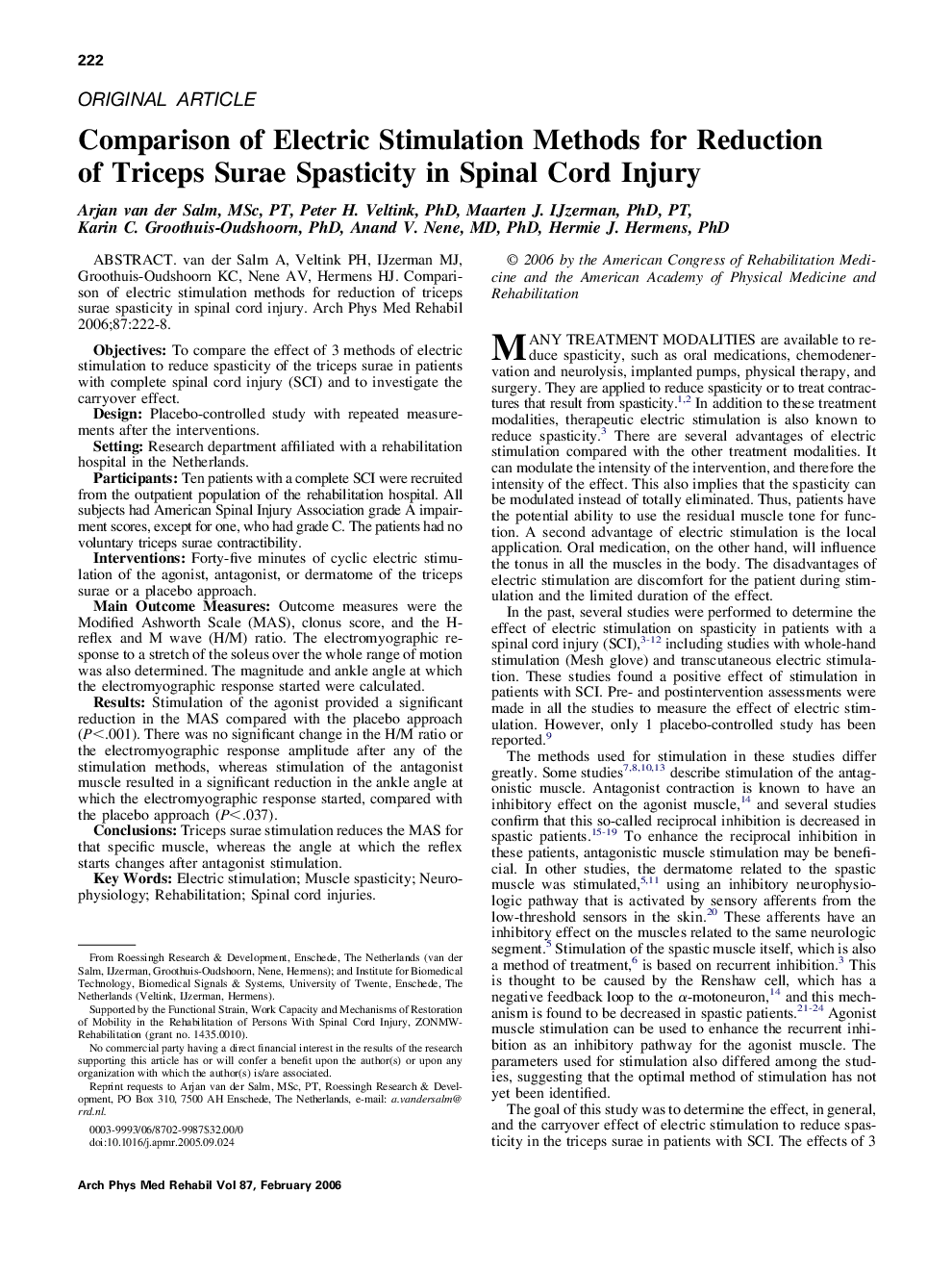| کد مقاله | کد نشریه | سال انتشار | مقاله انگلیسی | نسخه تمام متن |
|---|---|---|---|---|
| 3452579 | 1595811 | 2006 | 7 صفحه PDF | دانلود رایگان |

van der Salm A, Veltink PH, IJzerman MJ, Groothuis-Oudshoorn KC, Nene AV, Hermens HJ. Comparison of electric stimulation methods for reduction of triceps surae spasticity in spinal cord injury.ObjectivesTo compare the effect of 3 methods of electric stimulation to reduce spasticity of the triceps surae in patients with complete spinal cord injury (SCI) and to investigate the carryover effect.DesignPlacebo-controlled study with repeated measurements after the interventions.SettingResearch department affiliated with a rehabilitation hospital in the Netherlands.ParticipantsTen patients with a complete SCI were recruited from the outpatient population of the rehabilitation hospital. All subjects had American Spinal Injury Association grade A impairment scores, except for one, who had grade C. The patients had no voluntary triceps surae contractibility.InterventionsForty-five minutes of cyclic electric stimulation of the agonist, antagonist, or dermatome of the triceps surae or a placebo approach.Main Outcome MeasuresOutcome measures were the Modified Ashworth Scale (MAS), clonus score, and the H-reflex and M wave (H/M) ratio. The electromyographic response to a stretch of the soleus over the whole range of motion was also determined. The magnitude and ankle angle at which the electromyographic response started were calculated.ResultsStimulation of the agonist provided a significant reduction in the MAS compared with the placebo approach (P<.001). There was no significant change in the H/M ratio or the electromyographic response amplitude after any of the stimulation methods, whereas stimulation of the antagonist muscle resulted in a significant reduction in the ankle angle at which the electromyographic response started, compared with the placebo approach (P<.037).ConclusionsTriceps surae stimulation reduces the MAS for that specific muscle, whereas the angle at which the reflex starts changes after antagonist stimulation.
Journal: Archives of Physical Medicine and Rehabilitation - Volume 87, Issue 2, February 2006, Pages 222–228